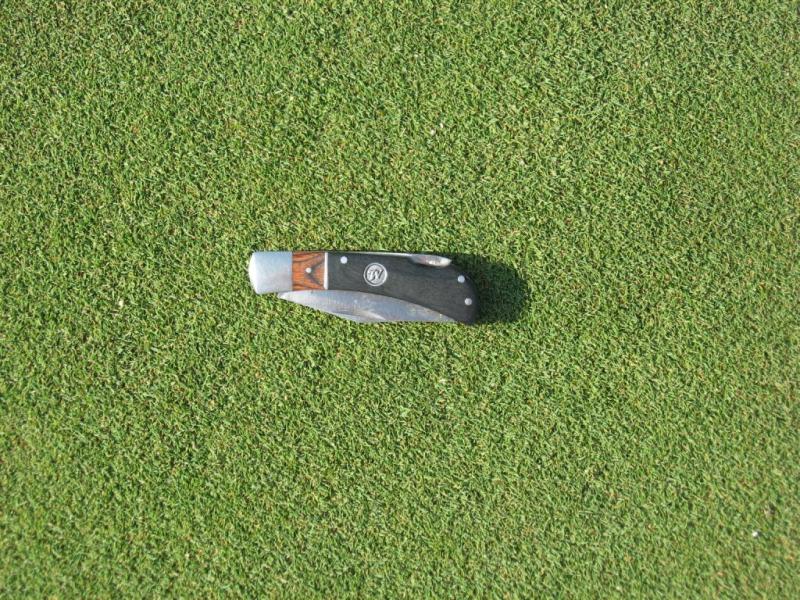Credit to Dr. Karl Danneberger, The Ohio State University, who offered some of the following descriptions for morphological reason for "puffiness." This information is important for one to have a better understand of how grasses grow and what may cause a turf to become "puffy" and "scalp" during mowing.
Know that grass tillering (tillers develop into individual daughter plants) is an organized system that is well structured.
As a general guideline 2.7 to 3.1 live leaves are produced per tiller regardless of density. Individual leaves (as found on a grass tiller) live only three or four weeks during the growing season.
So, to maintain plant and leaf density in a turf, during the summer, grasses require a constant and orderly replacement of new plants (tillers) and new leaves.
The graphic below shows a creeping bentgrass stolon (horizontal stem), with a daughter plant starting to grow at the base, from a node on a stolon, on the left. This new plant, found at the base of the plant, on the left is an example of a lower order bentgrass tiller.
The plant on the right shows a higher order bentgrass tiller initiated from a node on a tiller, on the right. It is the higher order tillers that may cause a turf to become "puffy" and "scalp" while mowing.
Tillers appear in a specific sequence and may be influenced by the growth of a bentgrass variety.
The lower order tillers are considered primary tillers that emerge close to the base of the primary tiller, while the higher order tillers are produced from subsequent axis of later emerging leaves. Higher order tillers generally appear slightly higher in the canopy.
In a dense turf, higher tiller orders are typically smaller, more succulent, compete for light, and become dominant over lower order tillers.
If the higher tiller orders elongate, the leaves associated with these tillers become raised higher into the turf canopy creating a "puffy", "soft", and "spongy" turf that is prone to "scalping" during mowing.

The photo above is creeping bentgrass maintained at a higher height of cut. Under these conditions you can see a long stolon, with individual tillers growing from a node. From these tillers we find both lower and higher order tillers developing.

